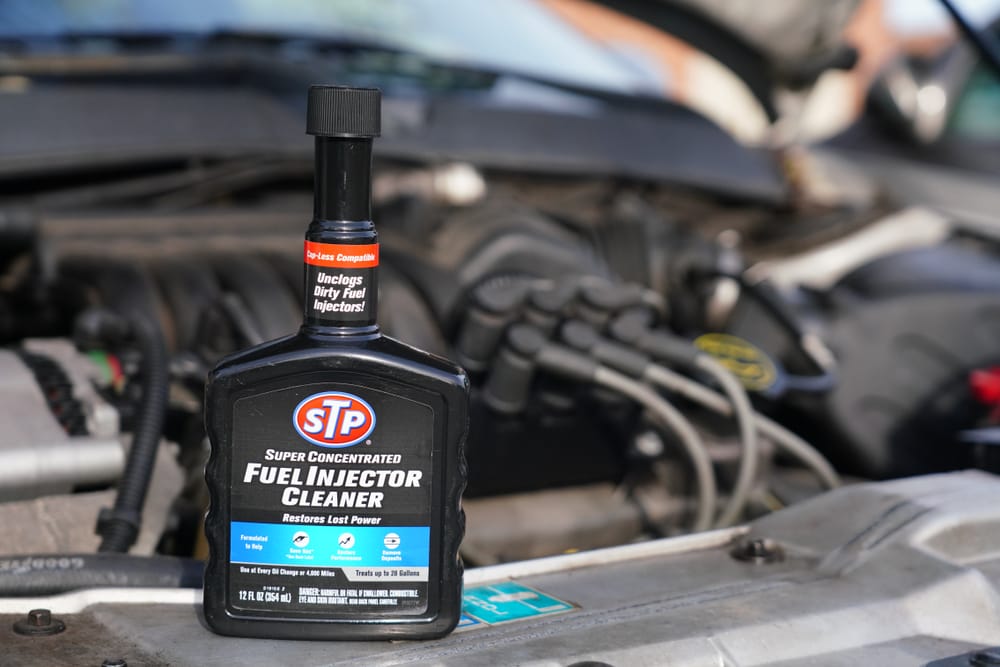Gas treatments are special additives that cover several functions like
cleaning, performance enhancement, lubrication, and stabilizers. There are
gas treatments that serve a single purpose and others that combine several
functions.
One question often pondered is if gas treatment is less effective when
added to a full gas tank.
Yes, you can put gas treatment in a full tank, but adding it to a half
tank or nearly empty tank right before fueling up will get a better
mix.
Regardless, even when adding gas treatment to a full tank, the fuel
treatment will mix sufficiently to perform optimally while driving.
Below we discuss things to keep in mind if you're planning on adding a gas
treatment to your car's fuel.
 Adding gas treatment to a full tank of gas is ok.
Adding gas treatment to a full tank of gas is ok.
How Do You Know If You Need A Gas Treatment?
Several symptoms may indicate a problem with the fuel in your vehicle's
gas tank, and you should consider a gas treatment.
Low-quality or old gas gasoline can contain impurities that can lead to engine
misfires, rough idles, acceleration lag, and poor mileage performance.
A gas treatment can help improve fuel quality by removing water and
inhibiting other contaminants.
Low-grade fuel has a low octane level and may be high in water and other
impurities.
A good gas treatment has additives that bind with the contaminants in your
fuel, eliminating them.
Here are a few signs of a struggling fuel system that a gas treatment may
successfully rectify:
-
Engine Misfiring: Impurities in gas, like water, can prevent complete combustion,
leading to engine misfires. Putting gas treatment in your gas tank will
reduce their frequency.
-
Troublesome Starting And Idling:
A rough idle or trouble starting combined with a fuel smell may
indicate a stuck fuel pump due to gunk. A gas treatment can clean the
gunk out and get your fuel pump functioning correctly again.
-
Poor Fuel Economy:
Gas treatments can unstick stuck fuel injectors, significantly
increasing a vehicle's fuel economy.
-
Acceleration Lag: Acceleration lag may happen because of a malfunctioning fuel pump,
clogged fuel filter, or injector. Putting gas treatment in your fuel
tank will degunk these parts, helping resolve the issue.
-
Failed Emission Test:
Your car can fail the state emission test because of a clogged fuel
injection system. A gas treatment will unclog it, enabling your vehicle
to pass the emission test.
Can Gas Treatment Hurt Your Car?
When appropriately used, gas treatment cannot hurt your car. You will
run into problems only if you put in too much, use a low-quality gas
treatment, or one that is incompatible with your engine type.
If you put too much fuel injector cleaner inside your fuel tank, its
corrosive elements can damage the lining of the gas tank.
If you put in too much gas treatment, the situation is remediable.
If you have room in your tank, you can add fuel to dilute the mixture, or
you can drive your vehicle to burn fuel and make room in your gas tank to
add fresh gasoline.
Using a low-quality and/or the wrong type of gas treatment can seriously
damage your fuel injection system. Here is what might happen:
-
Clogging: A low-quality gas treatment only loosens the buildup but not
disintegrates it, allowing it to clog or settle over other parts of the
engine.
-
Damaged Fuel Pump: A gas treatment with corrosive agents can damage the fuel pump,
preventing it from getting sufficient fuel from the tank.
-
Vibration:
The loosened gunk can cut the fuel supply to one or more cylinders,
which, if empty, will cause misfires and vibrations.
-
Ruins Sensors:
A sensor-insensitive fuel treatment can hamper sensor performance,
leading to black exhaust, engine hesitation, and loss of fuel
efficiency, or trigger the check engine light.
How Long Does Gas Treatment Take To Work?
Usually, it takes about 100 to 300 miles of a car's runtime for any
noticeable results to appear. A gas treatment starts working as soon as you
put it inside your fuel tank. However, it will take some time to see a
difference in your vehicle's performance.
Conclusion
Gas treatments remove impurities from your fuel system, boost your fuel
mileage, lubricate the moving parts, or stabilize the fuel before storage.
Putting the gas treatment in a full tank is technically OK, but it will
take some driving for the treatment to mix in with the fuel.
The most efficient method is to add the gas treatment to a near-empty gas
tank and then fuel up, mixing the treatment thoroughly throughout the fuel.